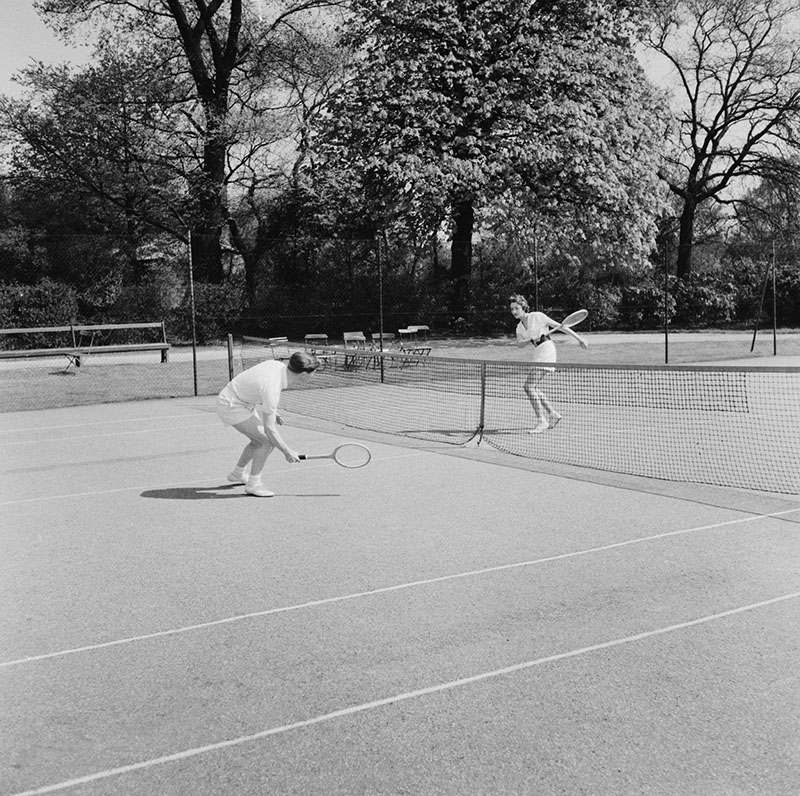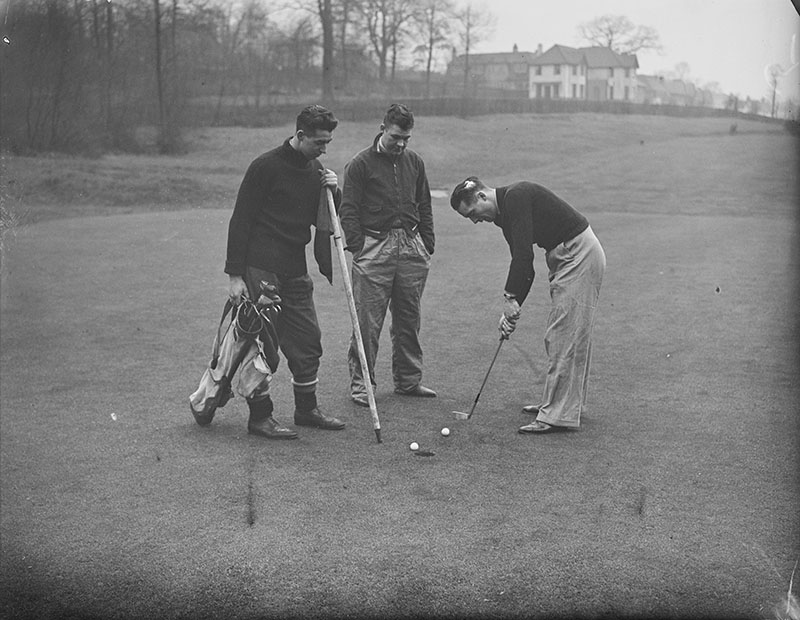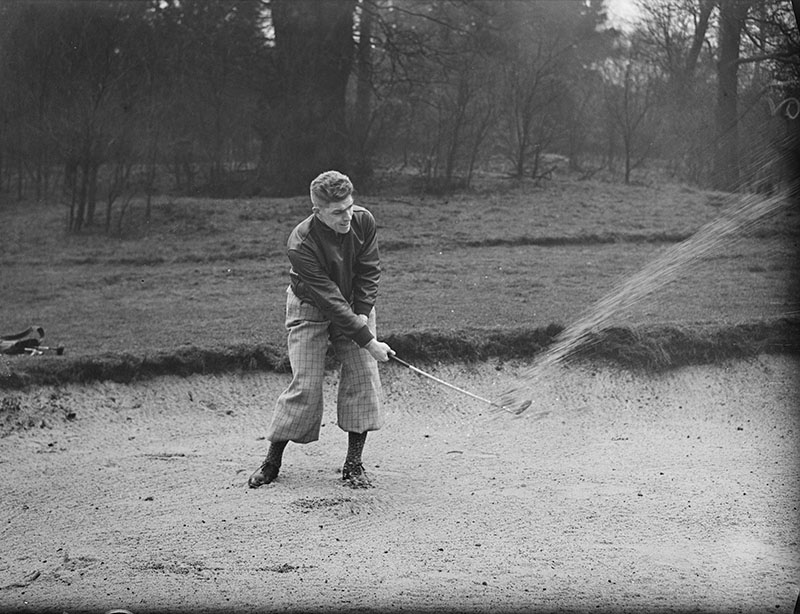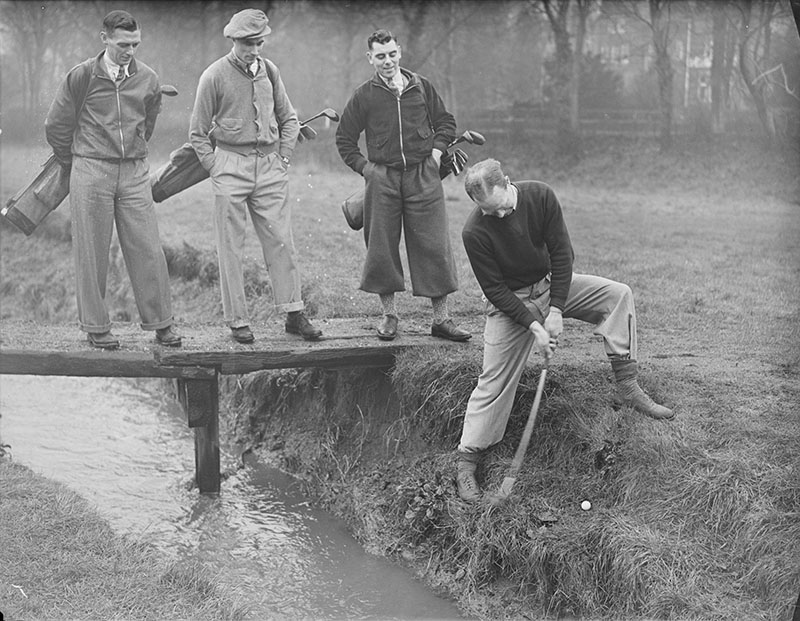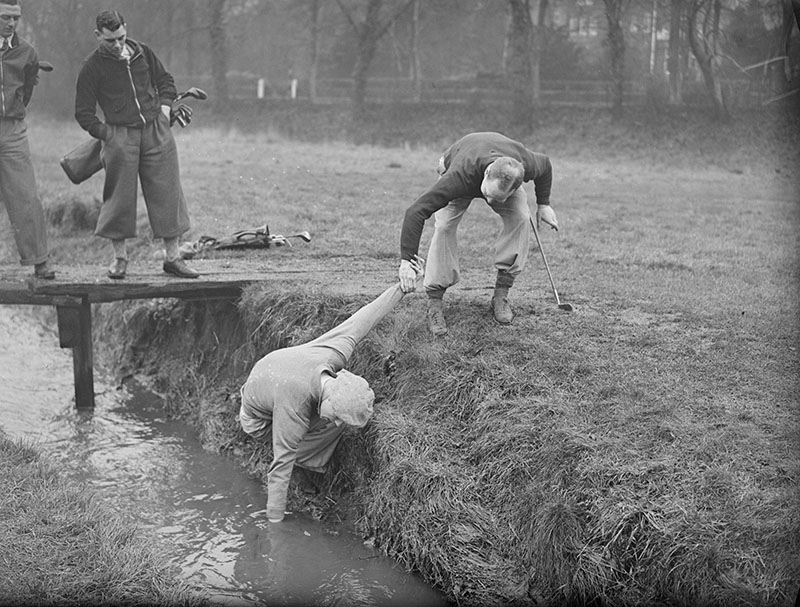Exercise is important for a healthy body and mind—taking time, even if it’s only 10 minutes of activity, can provide a real lift, especially as restrictions apply on other parts of life at the moment.
Clearly exercise, either by amateurs or professionals, individuals or teams has long been of interest to photographers and publishers.
Looking at three specific collections within the National Science and Media Museum archives, it’s possible to compare the images, their content, style, how they were created and for what purpose.
Kodak Collection
The Kodak Collection came to the museum in the 1980s and is probably the most significant single collection we have, incorporating thousands of pieces of equipment, photographic albums, books, journals and of course photographs. Among these is the Kodak Snapshots collection, which—as the name suggests—is a collection of small photographs taken with handheld Kodak cameras.
These snapshots demonstrate not only the kind of photograph you could take with a particular Kodak camera and film, but also how portable they were and how easy it could be to capture the fun moments of life. They were able to capture movement with no blurring of the image, be it a man jumping, a gymnast leaping or a dog nonchalantly trotting by unimpressed by show-off humans.



Photographic Advertising Archive
Photographic Advertising Limited was founded in 1926. The company created multi-purpose stock images with the potential for selling a range of products. While enjoying its greatest success during the 1930s, it continued in business until 1977.
Alongside these exercise images are shots for clothing (knitwear is particularly well represented), food and kitchen appliances, as well as models expressing just about every emotion you could think of.
Photographic Advertising Limited’s trademark, the staged studio photograph, was its selling point and, later, its downfall. This kind of generic image gradually fell out of favour as clients increasingly demanded targeted advertising campaigns with specific photographs.

The contradiction in these images advocating healthy outdoor pursuits with images shot in a studio is easy to see. However, there are some tennis shots actually taken outdoors (below)—even if a sense of realism was not considered entirely necessary; there are clearly no tennis balls involved!
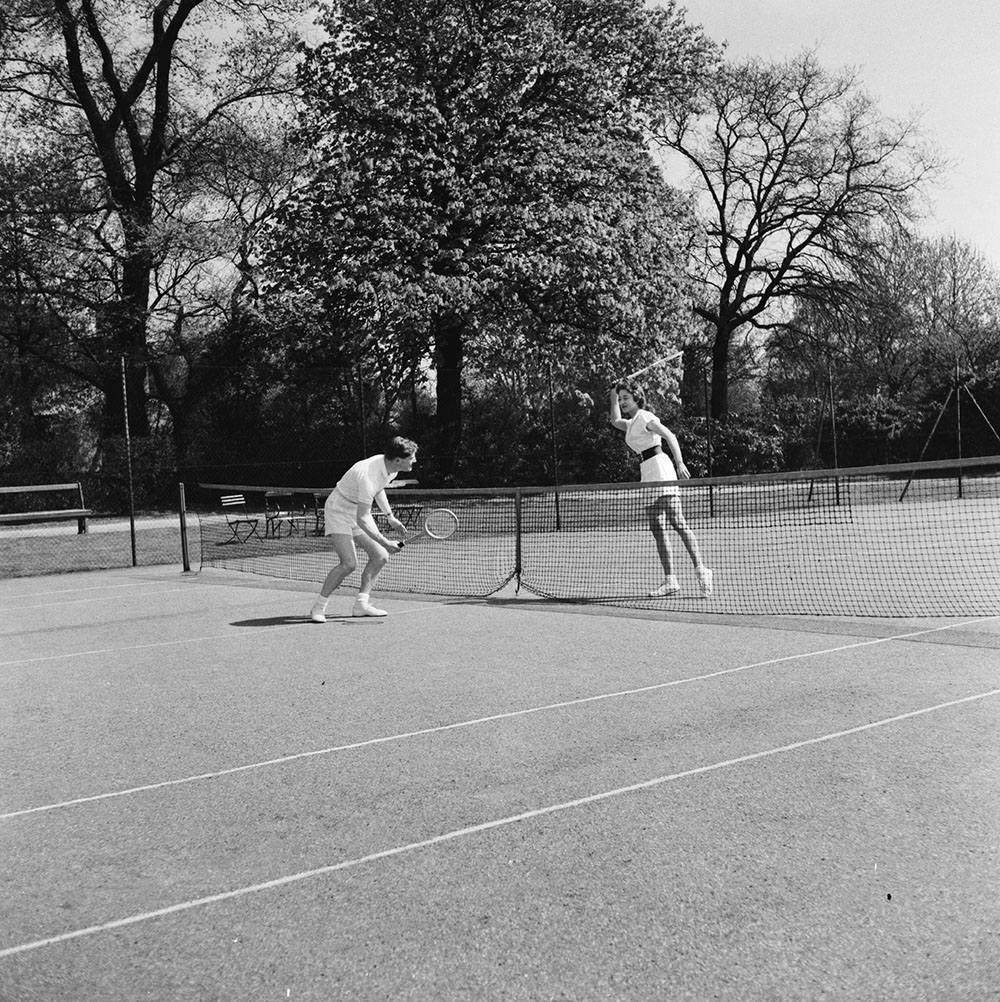
Daily Herald Archive
The largest single collection within the museum’s holdings is the Daily Herald Archive, the newspaper picture archive of British national newspaper The Daily Herald. As you might imagine these images are different again from those mentioned above, illustrating a story, event or any newsworthy moment from the 1930s to the end of the 1960s.
These images provide illustrations of everyday British life, a society at work and play. Easily recognisable and relatable by the readership.

The below photograph was taken at a camp in Epping Forest, London. During the 1930s, many of the poorer inhabitants of London could not afford holidays or trips to the country. Areas like Epping Forest provided valuable space for recreation for both young and old.

Adults were also encouraged to keep fit, including tips for fitness aids and demonstrating the importance of finding time for exercise during the working week.
The exercise machine below was displayed as part of a ‘Health and Beauty’ exhibition held at London’s Horticultural Hall.

The men in the photograph below are all delegates at the annual Trades Union Congress (TUC) conference being held in Brighton that year, taking time out to enjoy the sea air.


During wartime the fitness and so readiness of the nation was promoted through images such as this. It’s unfortunate that the positive message of women’s fitness and contribution to the war effort is somewhat undercut by the original caption: ‘A girl would be useful in the kitchen on her own, had she as many arms as this.’

It’s no surprise that sport featured heavily in the Daily Herald, and that includes more than just the ‘usual’ sporting action: here are images of professional sportspeople outside their usual settings.

Multiple shots offer picture editors choices and the possibility of a larger photo story. Here Charlton Athletic players swap their footballs for golf balls for a little team bonding (with varying levels of success).
Celebrities, sport and charity make an enticing mix for newspaper coverage. In the 1930s a number of Actresses vs. Authors cricket matches took place to raise money for charity. Bradford-born J.B. Priestley captained several of the matches for the Authors and in 1938, Beatrice Lillie captained the Actresses.

Finally (and not surprisingly), among the collection are examples of that news staple, the political photo opportunity, here with an exercise motif which fits into this strand perfectly as MP Barbara Castle joins in with the skipping at her old school.



